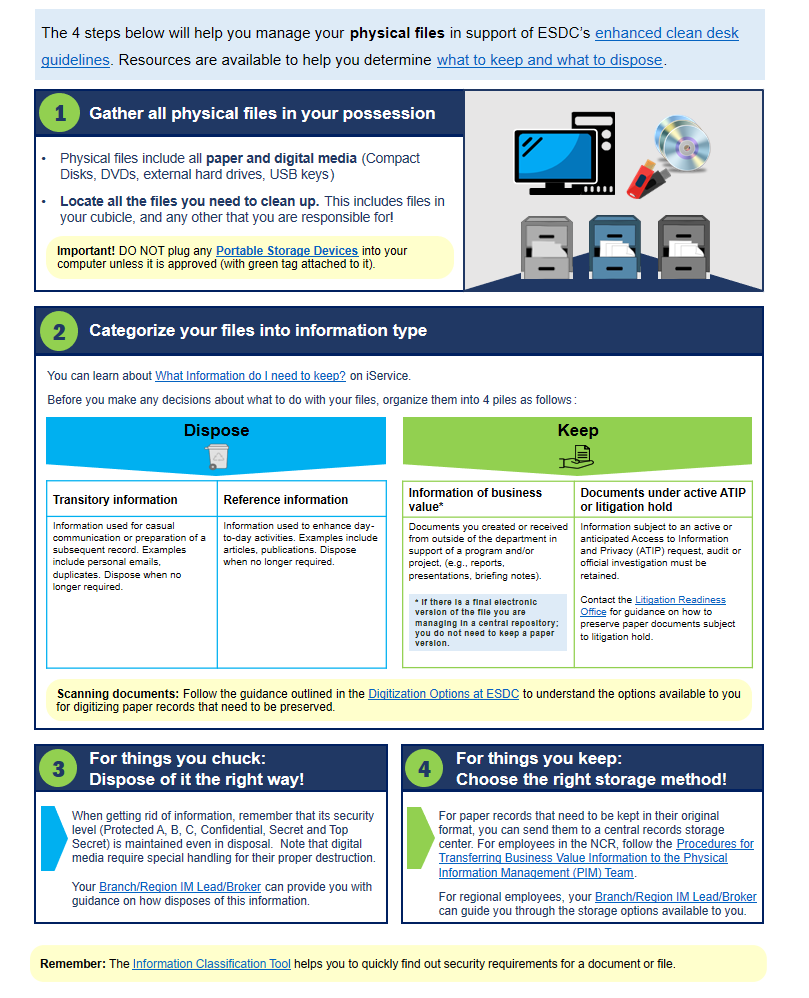Managing Physical Information following the clean desk guidelines
Long description
Managing Physical Information following the clean desk guidelines
The 4 steps below will help you manage your physical files in support of ESDC's enhanced clean desk guidelines. Resources are available to help you determine what to keep and what to dispose.
1. Gather all physical files in your possession
- Physical files include all paper and digital media (Compact Disks, DVDs, external hard drives, USB keys)
- Locate all the files you need to clean up. This includes files in your cubicle, and any other that you are responsible for!
Important! DO NOT plug any Portable Storage Devices into your computer unless it is approved (with green tag attached to it).
2. Categorize your files into information type
You can learn about What Information do I need to keep? on iService.
Before you make any decisions about what to do with your files, organize them into 4 piles as follows:
Dispose
Transitory information
Information used for casual communication or preparation of a subsequent record. Examples include personal emails, duplicates. Dispose when no longer required.
Reference information
Duplicate information used to enhance day-to-day activities. Examples include articles, publications. Dispose when no longer required.
Keep
Information of business value*
Documents and emails you created or received from outside of the department in support of a program and/or project, (e.g., reports, presentations, briefing notes).
* If there is a final electronic version of the file you are managing in a central repository; you do not need to keep a paper version.
Documents under active ATIP or litigation hold
Information subject to an active or anticipated Access to Information and Privacy (ATIP) request, audit or official investigation must be retained.
Contact the Litigation Readiness Office at : nc-ls-sj-litigation-readiness-gd@hrdc-drhc.net for guidance on how to preserve paper documents subject to litigation hold.
Scanning documents: Follow the guidance outlined in the Digitization options at ESDC to understand the options available to you for digitizing paper records that need to be preserved.
3. For things you chuck: Dispose of it the right way!
When getting rid of information, remember that its security level (Protected A, B, C, Confidential, Secret and Top Secret) is maintained even in disposal. Note that digital media require special handling for their proper destruction.
Your Branch/Region IM Lead/Broker can provide you with guidance on how disposes of this information.
4. For things you keep: Choose the right storage method!
For paper records that need to be kept in their original format, you can send them to a central records storage center. For employees in the NCR, follow the Procedures for Transferring Business Value Information to the Physical Information Management (PIM) Team.
For regional employees, your Branch/Region IM Lead/Broker can guide you through the storage options available to you.
Remember: The Information Categorization Tool helps you to quickly find out security requirements for a document or file.
